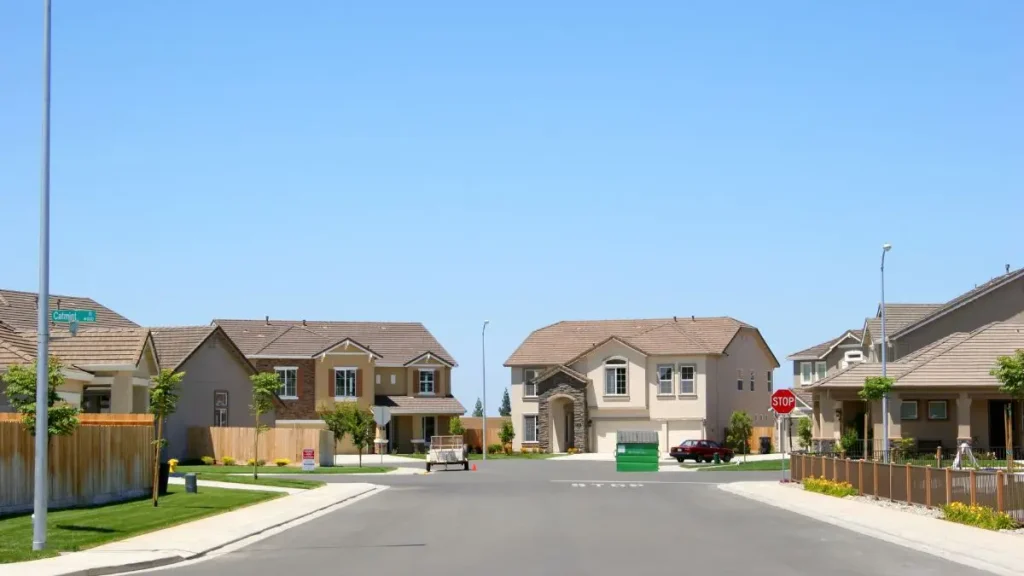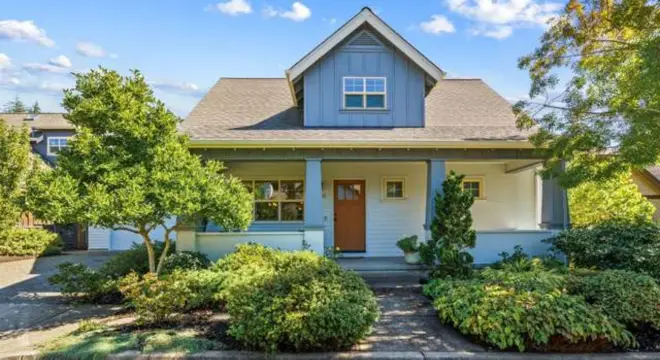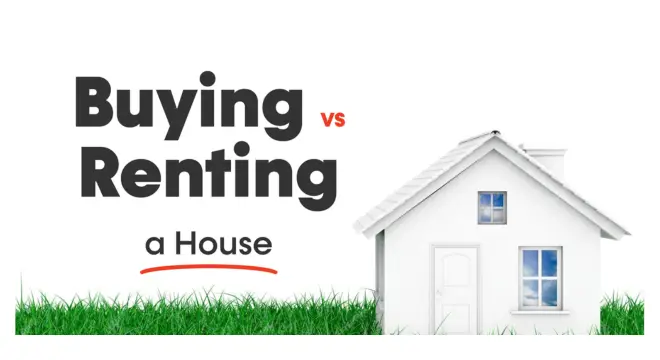These 10 States Have the Most Recession-Proof Housing Markets
If you’ve tried to buy or sell a home in the past year, you already know — this market feels broken.
Mortgage rates have doubled since before the pandemic. Prices are up 60% since 2019. And somehow, even with more listings popping up, homes are still wildly unaffordable for most Americans.
According to Harvard’s Joint Center for Housing Studies, the average U.S. home now costs five times the median household income. They didn’t sugarcoat it either — they called it “shocking.”
And here’s the kicker: home sales have crashed to a 30-year low. Builders are offering big discounts just to move inventory. One-third of U.S. markets are already seeing prices fall.
But it’s not all bad news.
If you look deeper, there are states where the housing market still makes sense — where home values are holding steady, property taxes are manageable, and the return on investment is still solid for sellers. These aren’t necessarily the fastest-growing markets or the flashiest metros. They’re the ones quietly weathering the storm while the rest of the country spins out.
That’s where I’m focusing today: the 10 U.S. states offering real housing stability in 2025 — based on appreciation, affordability, inventory health, and more.
What Actually Makes a Housing Market “Stable” in 2025?
Let’s clear this up — “stable” doesn’t mean cheap, and it definitely doesn’t mean booming.
In 2025, a stable housing market means resilience in the face of chaos. The states that made this list showed consistent performance across six key metrics:
- Affordability: How realistic is it for the average household to buy a home?
- Price Appreciation: Are home values growing gradually — or swinging wildly?
- Seller Gains: Are homeowners seeing solid returns over time?
- Inventory Health: Is there enough supply to keep prices from overheating?
- Property Taxes: Are ongoing costs predictable and fair?
- Risk Factors: Like rising foreclosures, underwater mortgages, or climate threats
These aren’t hype markets chasing unsustainable growth. They’re places where homeownership still works as a long-term investment.
These 10 U.S. States Have the Most Stable Housing Markets in 2025

These states earned their rankings by maintaining strong fundamentals like home value growth, seller profits, manageable taxes, and healthy supply levels.
1. Vermont
- Home price appreciation: 8.09% (highest on the list)
- Inventory: Up 19% year-over-year
- Affordability: Among top 5 in the U.S.
- Property taxes: High (1.2%), but offset by value growth
- Why it ranks: A rare combination of appreciation, accessibility, and inventory balance
2. Tennessee
- Seller return: Average 87% profit
- Property taxes: Very low (0.46%)
- Inventory: Around 4 months
- Why it ranks: High ROI for sellers and increasing affordability for buyers
3. Montana
- Home price growth: 6.78%
- Inventory: Moderate (5 months)
- Affordability: Challenging for locals, driven by inbound migration
- Why it ranks: Long-term demand keeps values stable despite pricing pressures
4. Nevada
- Appreciation: 6.7%
- Property tax law: Buyers inherit previous home valuations, reducing costs
- Inventory: Around 4 months
- Why it ranks: Stable price performance paired with tax predictability
5. Arizona
- Appreciation: 1.22% (low but consistent)
- Housing starts: Among top 5 nationwide
- Inventory: 4 months
- Why it ranks: New construction is balancing growth with affordability
6. North Carolina
- Price appreciation: 4.77%
- Inventory: Tight, but supported by ongoing construction
- Property taxes: 0.59%
- Why it ranks: Economic momentum and housing growth help offset storm-related risk
7. Idaho
- Appreciation: 6.52%
- Housing starts: Nation-leading activity
- Inventory: About 3 months
- Why it ranks: Demand supported by consistent new supply keeps the market in check
8. South Dakota
- Price appreciation: 2.9%
- Seller return: Roughly 54%
- Inventory: 3 months
- Property tax: 0.99%
- Why it ranks: Historically low foreclosure activity and steady long-term performance
9. New Hampshire
- Appreciation: 7.3%
- Seller return: 83% average gain
- Inventory: Tight (3 months)
- Affordability: Weak (ranked 42nd nationally)
- Why it ranks: High profitability outweighs tax and affordability drawbacks
10. Hawaii
- Appreciation: Approximately 4%
- Seller return: 86%
- Inventory: Stronger than expected (7 months)
- Property tax: Lowest in the U.S. at 0.33%
- Why it ranks: Expensive but highly stable for long-term owners and investors
If you’re new to the market, don’t skip the paperwork — these 16 essential documents and 6 to avoid can make or break your buying journey.
What Makes a Housing Market Truly ‘Stable’ in 2025?
When people hear “stable housing,” they often think “cheap homes.” But in 2025, stability means something deeper: price consistency, inventory balance, and lower market risk over time.
Key indicators include:
- Gradual price growth (not boom-bust cycles)
- Reasonable inventory levels (3–5 months supply)
- Fewer foreclosures or underwater mortgages
- Healthy seller return rates, even after inflation
- Tax and insurance predictability, especially in climate-sensitive areas
This helps readers see beyond hype markets and focus on long-term resilience — critical for buyers investing their life savings.
Curious how rising migration and new construction are shaping local housing in real time? We’ve been tracking market shifts through community discussions — especially where buyers share on-the-ground insights that data often misses.
Key Trends Driving Stability in These States
While each state on the list has its own strengths, some trends are driving nationwide stability:
- Surge in internal migration: Americans are leaving overpriced metros (like San Francisco and NYC) and flocking to mid-sized cities in Tennessee, Arizona, and the Carolinas.
- New construction momentum: Idaho and Arizona are actively building — helping prevent severe shortages seen in states like California or Florida.
- Balanced job markets: Many of these states have a strong mix of healthcare, manufacturing, and logistics sectors — reducing employment volatility.
- Policy-driven tax relief: States like Hawaii and Nevada maintain low or predictable property taxes, offering long-term affordability.
- Remote work flexibility: Workers no longer tied to urban hubs are seeking lifestyle-driven places with lower costs and greater space.
These trends help explain why these 10 states stayed on solid footing while others struggled with volatility.
In fact, one-third of major U.S. housing markets have already reported year-over-year price drops, signaling deeper corrections ahead for overheated metros.
Stability Doesn’t Mean Perfect — Risks You Should Know

Even the most “stable” housing markets come with caveats — and many articles ignore them.
- Affordability strain: States like Montana and New Hampshire may have strong metrics but still price out average locals.
- Climate concerns: Tennessee and North Carolina, despite economic growth, face hurricane and flood risks. Use Climate Check for projections.
- Overreliance on migration: Places like Vermont are benefiting now — but could see declines if inbound movement slows.
- Limited economic diversity: Some rural markets (e.g., South Dakota) rely on narrow job sectors, which could pose long-term stability risks.
Highlighting these blind spots makes your article more realistic and valuable for decision-making readers.
Many sellers, especially in uncertain markets, are even pulling listings altogether — a trend seen across the U.S. as documented here.
Who Should Be Looking at These States in 2025?
Different buyers have different needs — and not every “stable” market fits everyone.
- First-time buyers should consider Vermont or Arizona for balanced prices and long-term appreciation.
- Real estate investors might lean toward Tennessee and Nevada, where seller gains and rental yields remain strong.
- Remote workers and freelancers can find both affordability and lifestyle perks in states like Idaho and North Carolina.
- Retirees often favor places like Hawaii and South Dakota — thanks to low property taxes and predictable returns.
Framing it this way aligns your content with real-life reader personas — helping more people see themselves in the list.
Final Thoughts
In a year where real estate headlines scream “boom” or “bust,” the smartest buyers are focusing on balance. The ten U.S. states highlighted here aren’t necessarily the flashiest — but they offer what matters most in 2025: predictability, affordability, and resilience.
Whether you’re buying your first home, retiring, or investing, the goal isn’t just to buy — it’s to build wisely. These markets let you do exactly that.
Want more housing insights like this? Explore our Real Estate & Homeownership section and stay ahead of market shifts.
Disclaimer: This article is for informational purposes only and does not constitute financial or real estate advice. Data and trends are based on sources available as of mid-2025 and may change. Please consult a certified professional before making housing or investment decisions.


